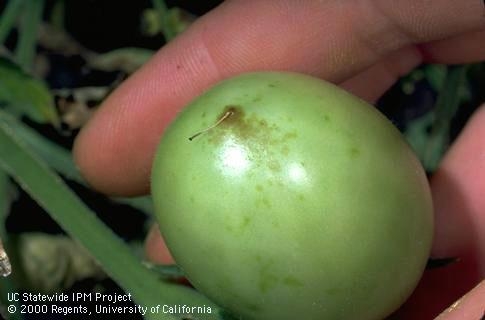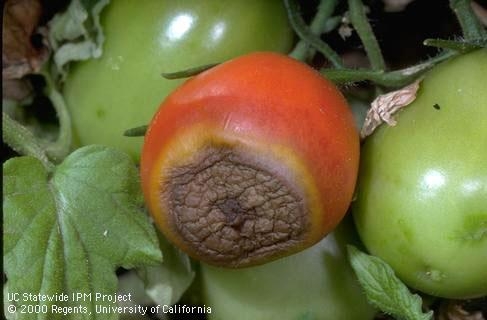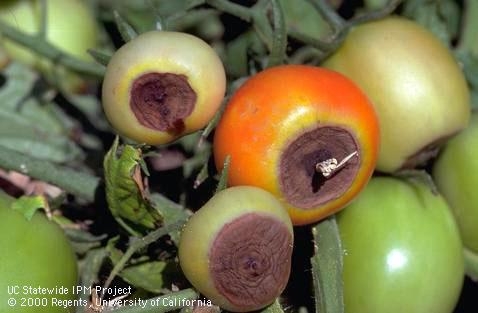Are your tomatoes not looking their beautiful best this year? They may be suffering from blossom end rot.

End rot is not caused by a disease or a pest. It is a physiological problem caused by a low level of calcium in the tomato fruit. This calcium deficiency is usually caused by irregular watering. Water carries calcium and other nutrients throughout the plant, and without enough water, the calcium, which is being used first for foliar growth, doesn't make its way to the fruits.
Calcium is required in relatively large concentrations for normal cell growth, and when the rapidly-growing fruit is deprived of calcium the tissues break down, leaving the characteristic lesion.

Other factors that can reduce the uptake and movement of calcium into the plant include low calcium levels in the soil, excessive soil moisture, root damage, and a soil pH that is too high or too low below the optimum 6.5.
To control this problem, maintain even soil moisture by watering regularly. Amending the soil with organic matter such as compost will improve the soil's ability to retain water, and mulching around your tomatoes will reduce water evaporation from the soil.
Avoid heavy applications of high-nitrogen fertilizer, and if your soil is deficient in calcium, it can be amended with gypsum or another source of calcium. One easily available source of calcium happens to be eggshells, which are high in calcium carbonate, an excellent soil amendment. Incorporating crushed eggshells into the soil around tomato plants or at the bottom of their planting holes will help prevent blossom end rot.

UC Master Gardeners of Butte County are part of the University of California Cooperative Extension (UCCE) system. To learn more about us and our upcoming events, and for help with gardening in our area visit our website. If you have a gardening question or problem, email the Hotline at mgbutte@ucanr.edu or leave a phone message on our Hotline at 530-552-5812. To speak to a Master Gardener about a gardening issue, or to drop by the MG office during Hotline hours, see the most current information on our Ask Us section of our website.